Purple Leaf Indoor Plants: 19 Beautiful Purple Plants to Grow at Home
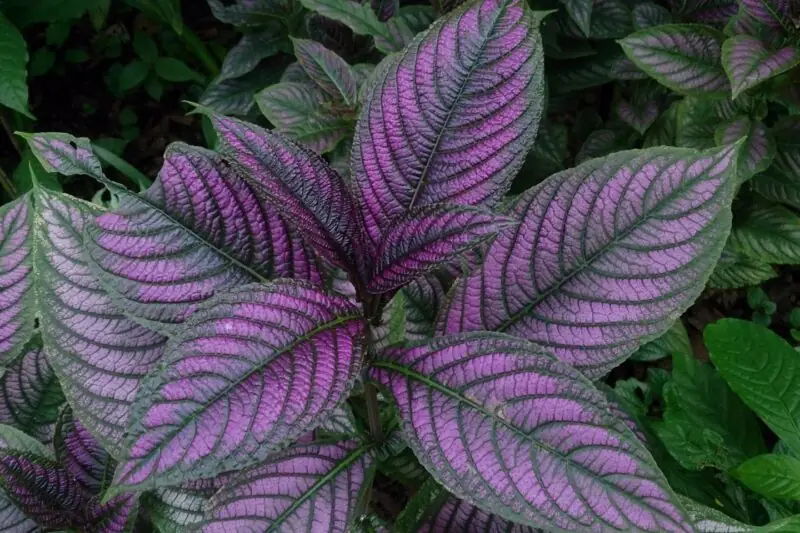
Are you seeking a unique way to invigorate your space with vibrant color? Purple leaf indoor plants are your answer! Not only do they introduce a vibrant splash of color, but they also feature intriguing patterns and textures, which can enhance any room. Let’s delve into the captivating beauty of these extraordinary plants.
The Importance of Purple Leaves in Indoor Gardening
Purple leaves are not only visually appealing; they also hold importance in the realm of gardening. Plants adorned with purple foliage often contain anthocyanins, the pigments that give them their lively hue. These pigments act as natural shields against harsh sunlight and UV rays, ensuring the plant’s photosynthesis process continues without disruption.
Moreover, many associate the color purple with notions of royalty or luxury. Consider the regal appearance of velvet when it bears shades like royal or eggplant. Plants with such rich hues can elevate the aesthetics of their surroundings.
The Impact and Symbolism of Purple
The influence of purple in any setting can be immense. It can create an atmosphere of tranquility and introspection, owing to its historic association with spirituality. It can also evoke feelings of creativity, inspiration, and passion.
Adding layers of symbolism only intensifies these effects. Representations of wealth and success, femininity, elegance, or mystery are but a few ways to incorporate this stunning pigment into an interior design scheme.
Top 19 Favorite Purple Houseplants: from Purple Passion Plant to Purple Waffle Plant
Here, we reveal the top 19 purple plants that you should consider adding to your collection:
Purple Passion
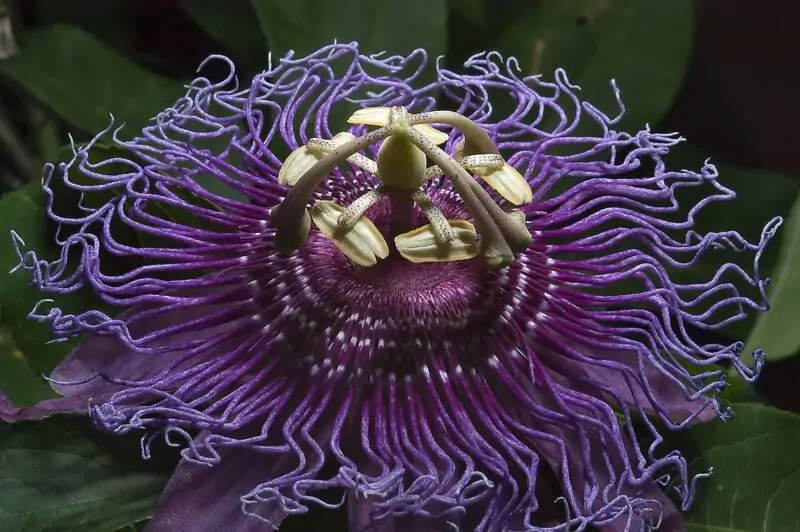
The deep purplish-green leaves of the Purple Passion have a velvety touch, making it a favorite among indoor gardeners. Even those unfamiliar with caring for houseplants will find this low-maintenance plant excellent.
Purple Heart (Tradescantia pallida)
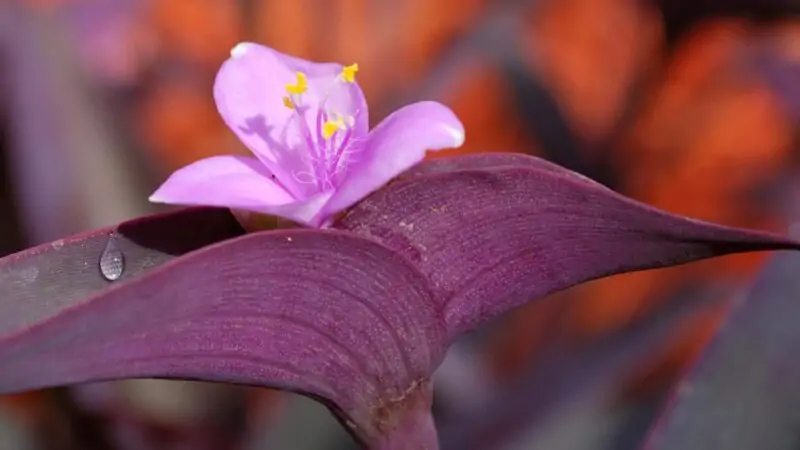
This stunning plant, also called the Wandering Jew, has unusually formed, heart-shaped leaves with glossy, variegated green-purple surfaces. It is the perfect option to stand out among other houseplants.
Purple Waffle Plant (Hemigraphis Colorata)
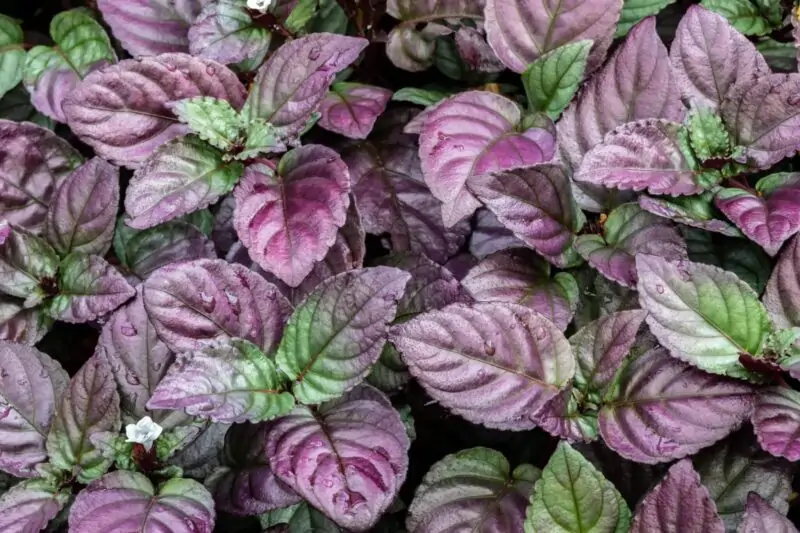
The Purple Waffle Plant, or Hemigraphis Colorata, is a captivating addition to any garden. Its textured, wavy-edged, oval-shaped purple leaves create a fascinating display.
Potato Vine
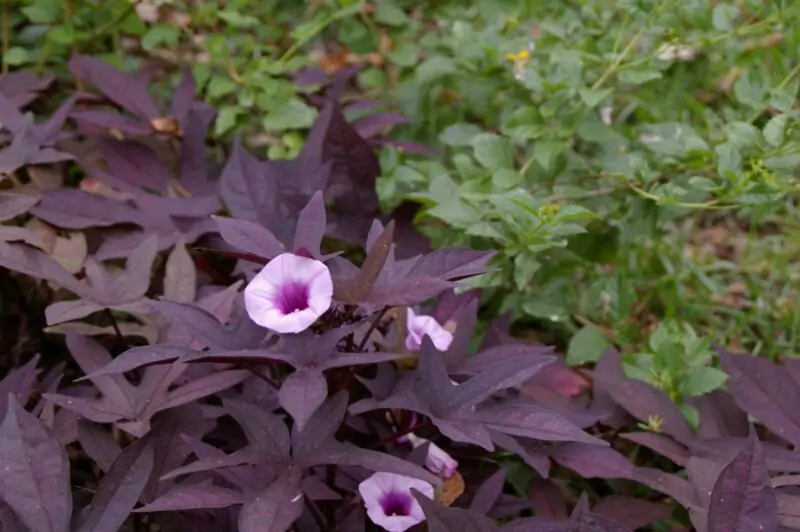
Potato vines are loved for their delicate green and purple leaves and charming white summer flowers. Trainable to climb walls or trellises, they’re an excellent choice if you’re seeking a plant that adds height and interest to your indoor space.
Prayer Plant
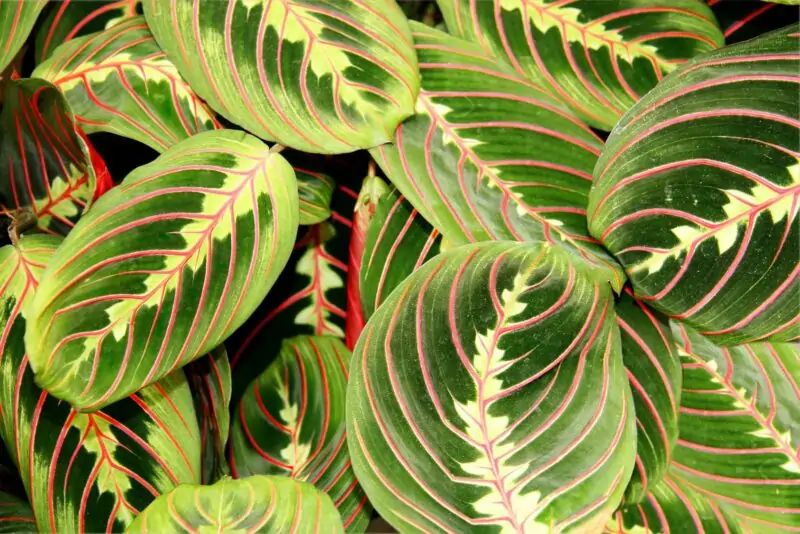
The Prayer Plant is renowned for its deep green foliage adorned with contrasting silvery purple stripes. This plant makes an elegant statement piece whether showcased on windowsills or tabletops.
Ti Plant (Cordyline Fruticosa)
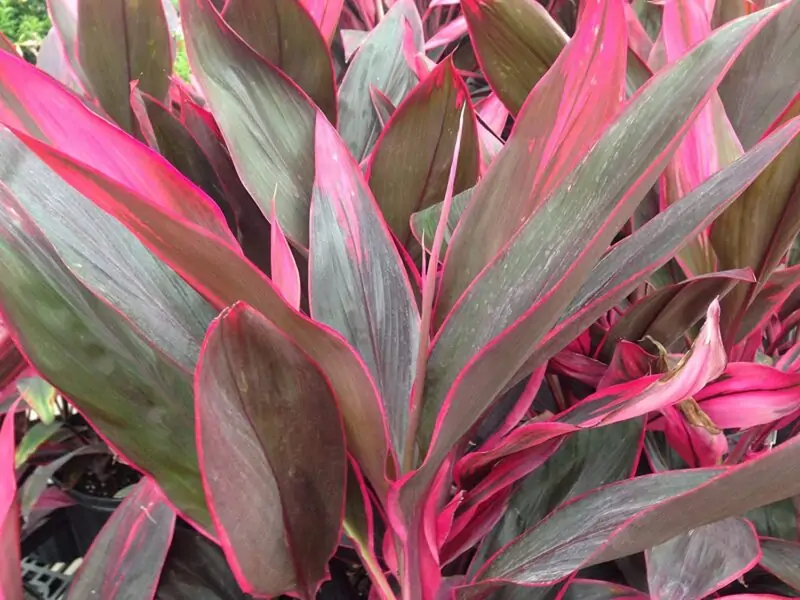
The Ti Plant, a tropical beauty, is admired for its strikingly attractive burgundy-purple leaves. These leaves add depth and dimension to any indoor space, creating a visually intriguing environment.
Persian Shield Plant
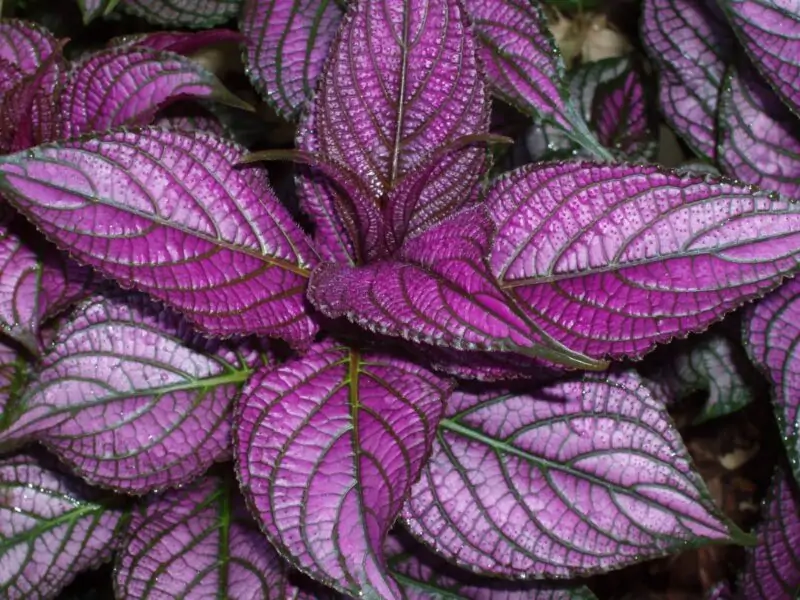
Another variety of the Persian Shield plant boasts vibrant shades of violet-pink hues combined with dark-green veins. These veins create stunning patterns across each leaflet. It’s a perfect addition to any plant collection due to its low-maintenance nature and year-round visual appeal.
Purple Oxalis
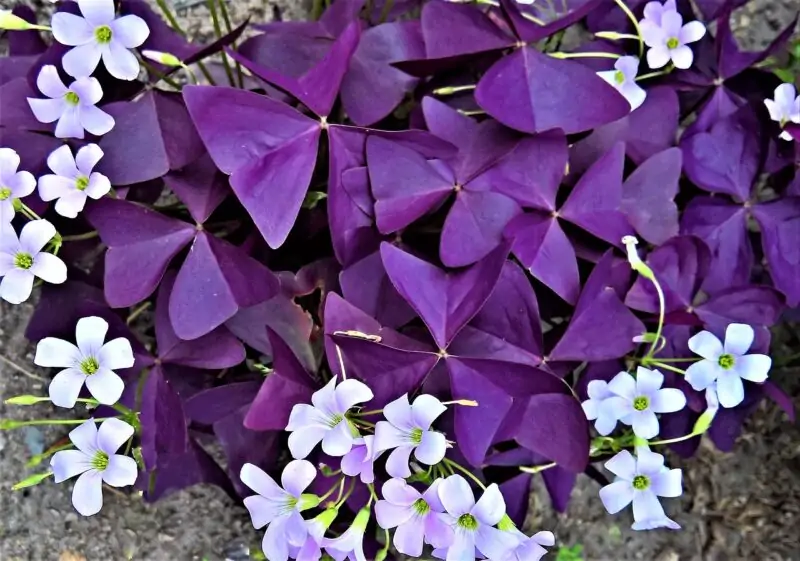
If you’re searching for a truly unique purple house plant, the Purple Oxalis is an excellent choice. This plant is known for its striking triangular leaves that fold up at night and open again during the day, adding a touch of nature’s magic to your indoor space.
Purple Coneflower
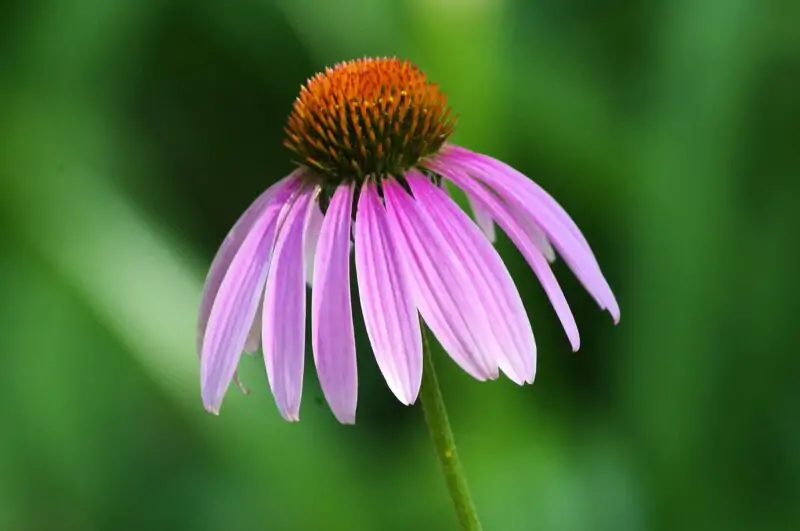
The Purple Coneflower, scientifically known as Echinacea purpurea, is a beloved plant among gardeners, admired for its striking purple flowers and hardy nature. This flower, native to North America, displays its vibrant colors from early summer to late autumn, adding a touch of majesty to any garden or landscape.
Its unique appearance is characterized by its large, daisy-like flowers. The petals, a rich purple hue, appear to cascade downwards from a prominent, cone-shaped center that’s speckled with orange and brown.
Wandering Jew Plant
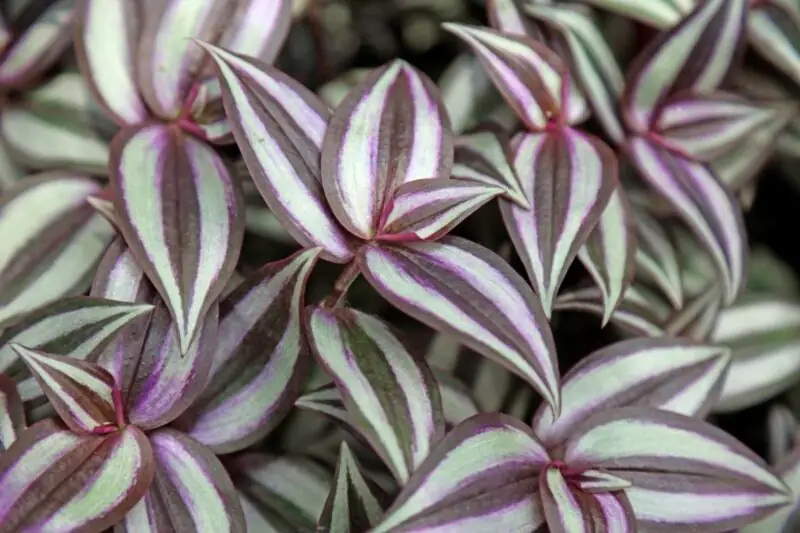
Looking for a stunning purple indoor plant that is simple to grow? Think about the Wandering Jew tree. Long trailing tendrils with green leaves are provided by this plant. The foliage have dots or stripes that range in color from various purple tones to shades of silver-white.
These plants prefer bright indirect sunlight. However, they can tolerate lower light levels, making them perfect for homes with less direct sun. They’re relatively drought-resistant but still require regular watering.
Propagation is simple – take cuttings from mature stems, remove the bottom leaves, and place them in well-draining potting mix until new roots emerge.
Purple Leaf Weigela
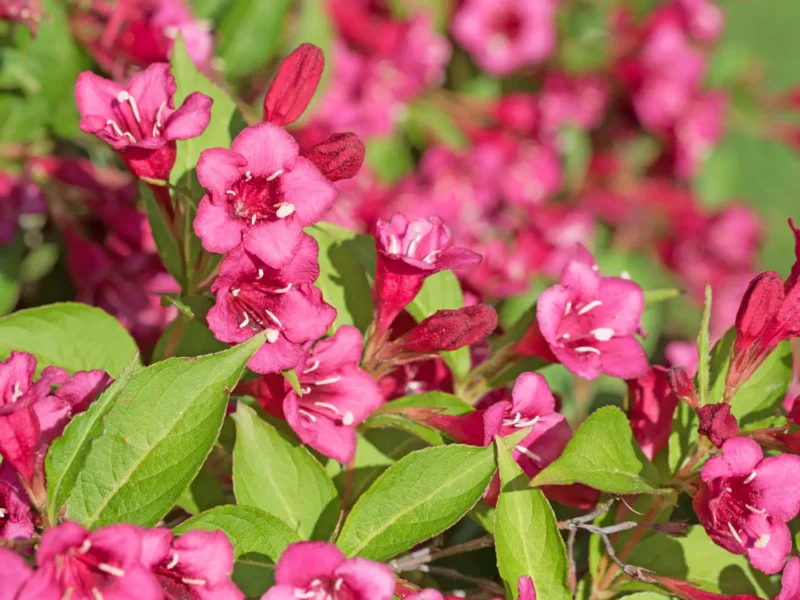
If you want your garden to look fit-for-a-queen (or king!), add the stunning dark-purple Weigela. This regal houseplant adds sophistication to any indoor garden.
The purple leaf weigela needs bright, indirect sunlight and well-draining soil. Regular pruning is required to maintain its shape as it can grow quite large if left unattended. Despite being slightly more high-maintenance, the striking beauty of this plant makes the effort worthwhile.
Royal Purple Smokebush
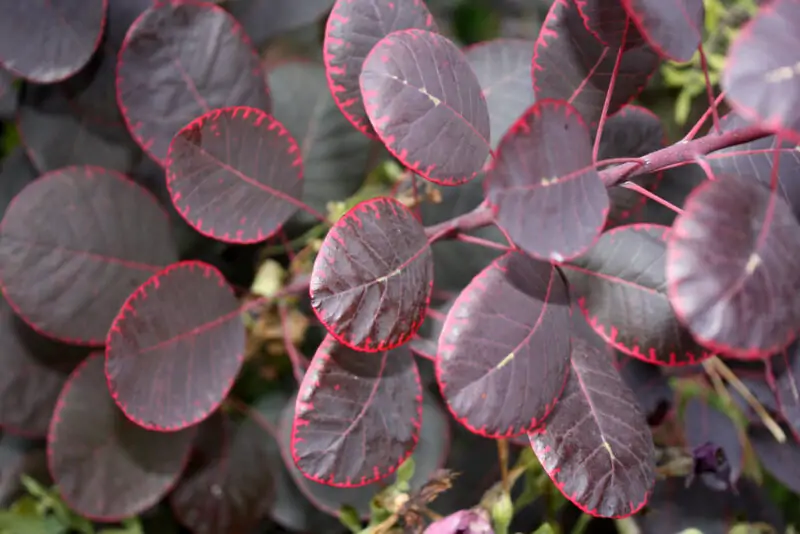
For a truly unique indoor garden addition, consider the royal purple smokebush. This plant offers dark purple leaves with wispy plumes resembling smoke.
The royal purple smokebush prefers bright but indirect light and moist, well-draining soil. Regular watering during the growing season helps maintain healthy foliage. Note, these plants can get pretty big, so ensure you have enough space before bringing one home!
Pilea
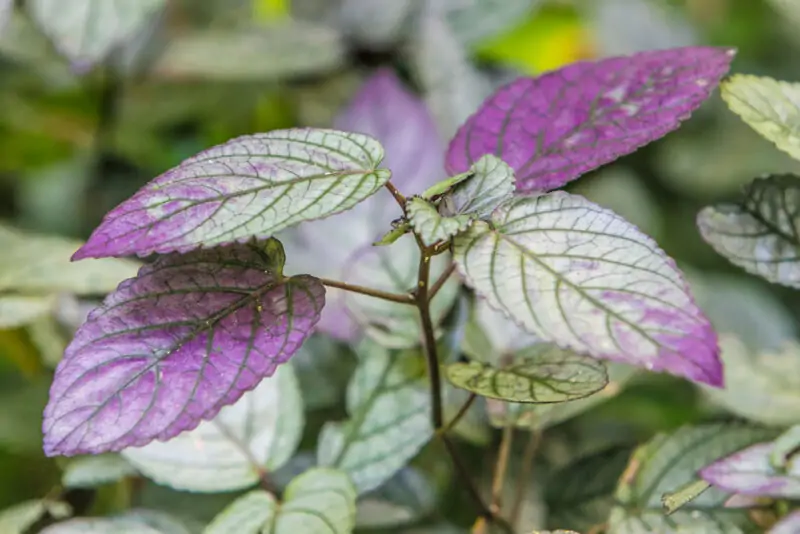
Pileas are known for their intriguing shapes, making them irresistible additions to any space. The Pilea glauca ‘Aquamarine’ stands out with beautiful shades of purple color covering the leaves, stem, and veins.
They thrive best under moderate natural lighting and need adequate hydration.
Polka Dot Plant
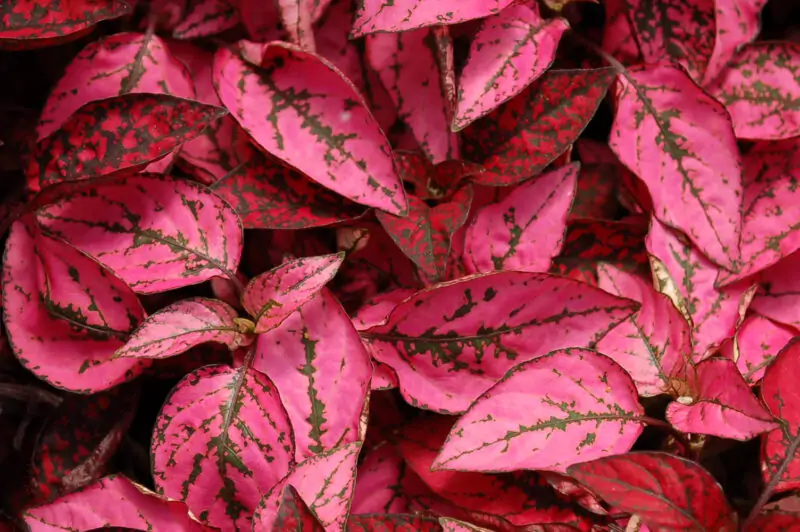
Looking for a houseplant with unique purple spots? The Polka Dot plant is a fantastic choice! This plant features green foliage covered in pink or purple dots.
The Polka Dot plant prefers bright but indirect light and moist soil. Overwatering can lead to root rot, so ensure the top soil layer dries out before watering again. These plants are easy to care for – keep them away from direct sunlight and prune back any leggy growth!
African Milk Bush
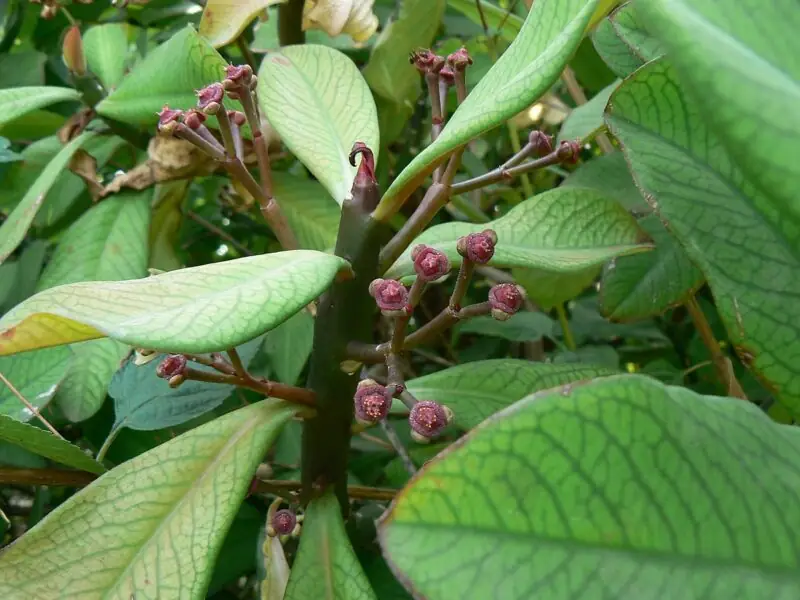
African milk bushes stand out with striking foliage ranging from shades of green to purple.
This unusual beauty requires moderate natural lighting and well-draining soil. It’s drought-resistant, so it tolerates periods without water. Check the moisture level every 2-3 days to avoid overwatering.
Rex Begonia
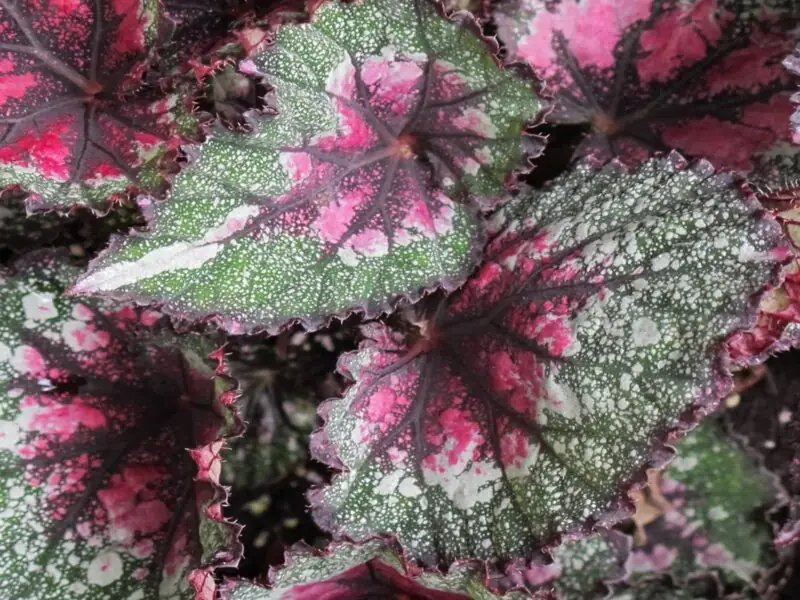
Rex begonias are popular for their vibrant and exotic looks, especially the ones with beautiful silver-purple leaves!
These stunning plants need high humidity and adequate hydration. Mix peat moss into the potting mixture to help retain moisture. They are relatively low maintenance and only require regular pruning during the growing season.
Velvet Plant (Gynura aurantiaca)
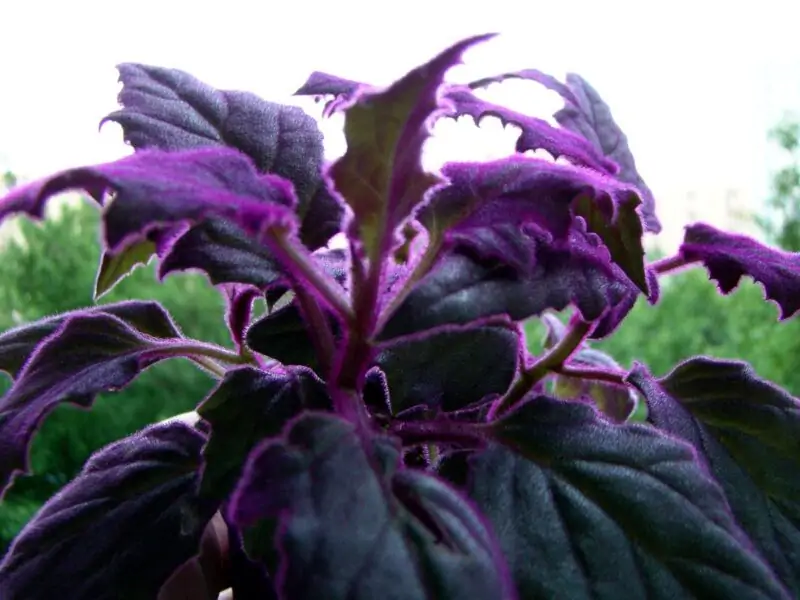
The Velvet Plant, also known as Gynura aurantiaca, is a stunning indoor houseplant famous for its vibrant purple foliage. This plant’s leaves are covered in fine hairs, giving them a velvety texture, hence the name “Velvet Plant”. The rich purple hue of the leaves contrasts beautifully with the bright green upper surface, adding an exotic touch to any indoor space.
This tropical plant is native to Java, an island of Indonesia, and prefers warm and humid conditions, much like its natural habitat. The leaves of the Velvet Plant are not only strikingly purple but are also quite large, with each leaf reaching up to 6 inches in length.
Coleus
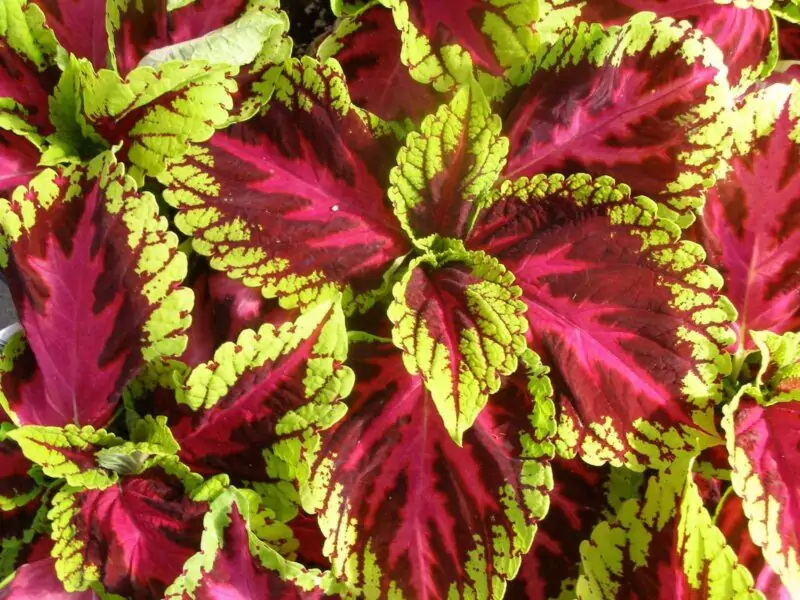
Coleus plants are recognized for their colorful foliage that ranges from green to various shades of purple. They thrive best under moderate natural light and need adequate hydration. Mix peat moss into the potting mixture to help retain moisture better. Coleus plants are relatively low maintenance and only require regular pruning during the growing season.
Rubber Tree ‘Burgundy’ (Ficus elastica)
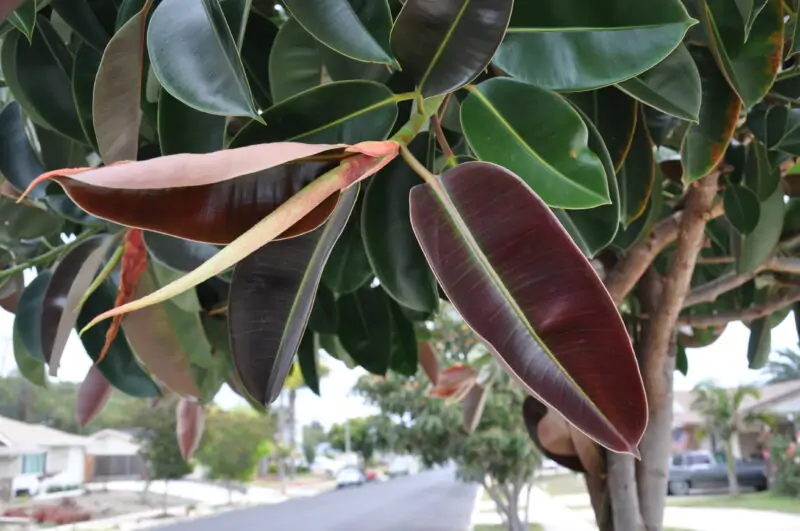
Concluding our list is the Burgundy rubber tree. These large houseplants have dark-purple leaves, making them stand out among other plants.
Rubber trees prefer bright, indirect light and moist soil. They’re drought-resistant, making them ideal even when watering schedules get off track. Ensure you dust off your rubber tree’s broad shiny leaves regularly to prevent dirt accumulation, which could block the photosynthesis process.
Cultivating Purple Leaf Indoor Plants
Purple leaf indoor plants add a vibrant touch to your living space. These plants offer charm and life, making any room feel more lively and inviting.
These colorful wonders, like all houseplants, need care and dedication. We will explore the essentials for cultivating healthy, thriving purple leaf indoor plants in this guide.
Light
The amount of light your plant receives is crucial. Most purple leaf indoor plants need bright yet indirect light to grow well.
They need around 4-6 hours of sunlight each day. Too much direct sun may cause the colors to fade or the leaves to wilt.
If your home or office lacks natural light, consider using artificial lighting!
Watering
The frequency of watering depends on factors such as humidity and soil type. These elements affect the plant’s moisture retention and drainage.
Typically, watering larger varieties once every two weeks suffices. Smaller ones may need more frequent watering because they dry out faster. Always check if the soil has drained well before watering again. Stagnant water can lead to root rot, which is harmful to the plant’s health.
Fertilizer
Fertilizers are vital for maintaining optimal growth rates. They provide essential minerals, vitamins, and nutrients necessary for plants to thrive.
It’s good practice to feed your purple leaf indoor plant once a month. Use a balanced fertilizer with equal parts nitrogen, phosphorus, and potassium.
Caring for Purple Foliage
Caring for vibrant purple foliage demands attention to detail. You must keep the plants well-watered and their surroundings dust-free. Dust can hinder the photosynthesis process within the leaves.
To prevent discoloration, wipe down each leaf gently with a damp cloth or sponge regularly. This also prevents debris from getting trapped and causing problems later.
Maintaining the Vibrancy of Purple Leaves
The vibrancy of your plant’s foliage depends on several factors. These include sunlight exposure levels, soil type, and watering frequency.
Here are a few tips to ensure maximum color retention:
- Avoid placing plants near windowsills that receive direct sunlight during peak hours.
- Keep plants indoors and away from drafts coming from open doors or windows.
- Use high-quality potting mixtures with plenty of organic matter to promote healthy root systems.
FAQs
If you’re new to indoor gardening or just starting your purple houseplant collection, you might have questions. Here are answers to some frequently asked questions:
There is no one “best” plant for everyone. Each person has unique preferences and needs when caring for houseplants. However, popular choices include Persian Shield, Purple Shamrock, Purple Passion, Purple Heart, Purple Waffle Plant, Potato Vine, Prayer Plant, Ti Plant, and Wandering Jew Plants.
While each plant type has specific requirements, here are general care tips:
Ensure sufficient sunlight exposure without over-exposing them to direct sun.
Avoid over-watering. Check soil moisture before watering again.
Use well-draining potting mix.
Fertilize regularly according to package instructions.
Regularly check for signs of pests or diseases, such as yellowing leaves or brown spots.
Local nurseries may have plants, including purple ones. If you don’t have access to nearby stores, online retailers such as Amazon or Etsy offer a wide variety of Purple Leaf Plants.
Conclusion
Purple leaf indoor plants not only add to the aesthetic appeal of your home but also improve the air quality and lower stress levels. There is a plant for everyone, from the low-maintenance Wandering Jew Plant to the metallic-hued Persian Shield. Start raising these now.